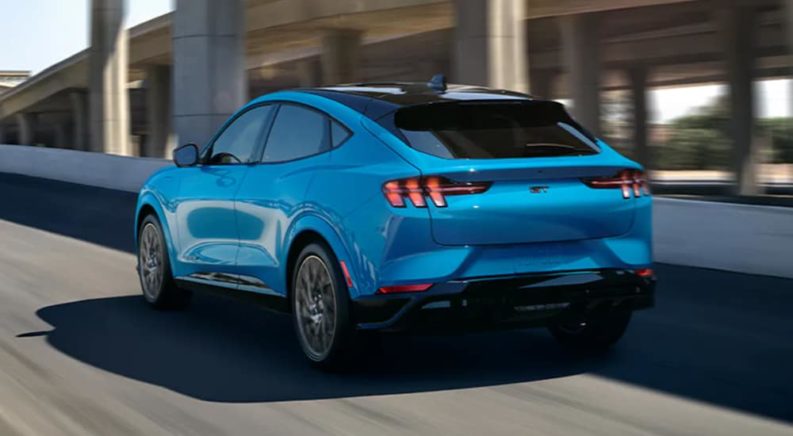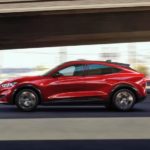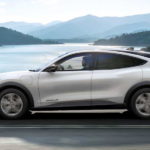Ford continues its march into mass electric vehicle production with the announcement of a new state-of-the-art addition to its famed River Rouge Complex. If you’re the sort of driver who always visits your local Ford dealer when you need a new vehicle, your ears likely perked up at this announcement. The new infrastructure investment – a rumored $700 million – underscores Ford’s deep and unwavering commitment to outpacing its competitors in the white-hot EV segment.
Discussing the infrastructure required to support EV production isn’t as exciting as fawning over the vehicles themselves at your dealership lot, but facilities like this one play a central role in the successful transition from fossil fuel-dependent fleets to an all-electric future. At the epicenter of Ford’s effort is this new state-of-the-art manufacturing facility. It’s here that Ford is building production lines to assemble EV versions of the most popular Ford models, most notably the soon-to-arrive all-electric 2023 Ford F-150 and, before it, the Ford Transit EV.
This facility feeds into Ford’s overarching goal, which is to build all-electric cars and trucks that perform as good or better than their gas- and diesel-powered predecessors. That’s a tall order that the company can’t walk back on, even if consumer interest is lukewarm at first. Buyers need a reason to abandon what they know for an exciting and – for some – slightly discomfiting future.
The new Rogue Complex facility enables Ford to prepare for mass EV production. Most major automakers are working on similar strategies to combat disruptive brands like Tesla, Lucid, and Rivian that may struggle to match the output of the existing industry leaders. Ford has the advantage here because of its existing infrastructure, so it’s a matter of evolving factories to build batteries and other EV components.
In the short term, Ford will backfill its existing model lineup with hybrid and EV options, sharing platforms to achieve economies-of-scale and using familiar nameplates – like Mustang and F-150 – to shorten the acceptance curve among consumers. That’s where the new facility comes in. It’s a time of big changes in the automotive industry.

Consumers Are Almost Ready For An F-150 EV
Even hinting at building a plug-in F-150 would have been considered automotive blasphemy just a scant few years ago. After all, what pickup-truck lovin’, self-declared Ford Superfan worth his cowboy boots would ever sanction an electric version of the rough-and-tumble F-150? However, a lot has changed as global consumer attitudes shift, and automakers pacify doubters with powerhouses like the GMC Hummer EV and the Ford Mustang Mach-E that challenge EV stereotypes.
It’s hard to refute the relevancy of a zero-emissions future. Ford’s $700 million investment in the historic Rouge Complex gave F-150 production a new home and paved the way for the 2023 EV version, which is expected to arrive in Ford dealer showrooms by mid-2022. Toying with the best-selling pickup truck in America is no longer a gamble. In fact, producing an electric option is merely good business.
Here’s the other benefit of a strategy that focuses on popular existing models: if manufacturers can successfully electrify high-performance sports cars and rugged full-size pickups with no loss of capability, utility, or performance, they’ll win over the automotive enthusiasts who influence mainstream trends. As these early adopters share positive ownership experiences, the trickle-down effect of their stories will move the sales needle.
In the meantime, Ford included the first-ever hybrid F-150 in its 2021 lineup, a smart move that will indirectly serve as a warm-up to the main event. The hybrid F-150 is no footnote, though, considering that it is not only the most efficient F-150 ever, it is also the most powerful with its 430 horsepower and 570 lb-ft of torque. Automotive journalists are smitten, and Ford intends to capitalize on that positive response when the F-150 EV makes its debut at Ford dealers next year.
Facility Capabilities and Targeted Plans
As factories go, Ford’s new facility is not unlike Willy Wonka’s Chocolate Factory. It’s a futuristic, automated wonderland shrouded in just enough cloak-and-dagger secrecy to protect intellectual property, with one big difference: the property is batteries, not chocolate.
To achieve mass-market production, battery R&D needs to accelerate faster than the new Mustang Mach-E GT Performance Edition. Everyday consumers won’t even consider an EV that doesn’t offer a similar driving range to a gasoline vehicle. That means continuous improvements and an openness to strategic partnerships with tech-oriented companies.
Ford partnered with LG Chem and others to supply battery cells for the Mach-E as it commenced scaling up to full-blown EV production. It’s possible that the company will decide to make its own battery cells, but a plan that involves OEM batteries is years in the making. In the interim, manufacturers like Ford look to third-party suppliers for key EV components.
The shift to all-EV production also means designing new assembly lines and embracing intelligent automation. Rob Williams, the manufacturing engineering manager at Dearborn Truck, hinted at the massive upgrades planned for the new facility. Among them is Ford’s plan to use automatic guided carts (AGCs), driverless, software-powered vehicles that streamline assembly lines and help manufacturers save time and money.
Marketing and Mass-EV Acceptance
Ford’s messaging about its EV plans is rooted in a “built in America” theme, which is both smart and necessary. Ford needs to successfully position EVs as part of the iconic Ford brand, not an offshoot or some kind of short-lived product experiment. Hesitant consumers need to hear the message consistently to buy in to the new product.
Big shifts like these aren’t easy. Ford’s challenge – and that of all major automakers intent on an all-electric future – is achieving mass legitimacy. Just like any other ground-shifting idea or plan, the trajectory begins with early adopters and influencers whose stamp of approval ignites a broader wave of interest. That stage has long passed, and the win went to Tesla. Now it’s up to Ford and others to own the narrative and bring their own EVs into the mainstream.
What will it take? Strategic releases of vehicles bearing trusted nameplates and a laser focus on EV capabilities- which is exactly what the new Rogue Center facility is designed to produce. It’s ironic that the site is built on a former Mustang production factory. Some say it’s hallowed ground, lending even more weight to Ford’s EV commitment. The 500,000 square foot facility will eventually employ 500 Americans, a statistic we’re sure to see in news stories to bolster Ford’s EV narrative.
The future is set for Ford, and the likelihood that consumers will buy in is fairly high. Vehicles like the 2023 Ford F-150 EV are expected to deliver more performance and capability than the vehicles that came before them, which will help buyers overcome their reticence. Add in effective and targeted dealer support and a consistent marketing strategy, and the shift will seem almost natural. We’ll go from “should we buy an EV?” to “why wouldn’t we buy an EV?” faster than Elon Musk can send another satellite into orbit.
If it sounds a bit like marketing trickery, that’s because it probably is to an extent. The difference here is intent. Ford’s efforts are benign. The shift to an all-electric vehicle future benefits consumers, the environment, and future generations. The fact that a major American automaker is at the forefront of this effort is something we can all applaud… and we can throw our support behind it by choosing to park a Ford EV in our driveway.





